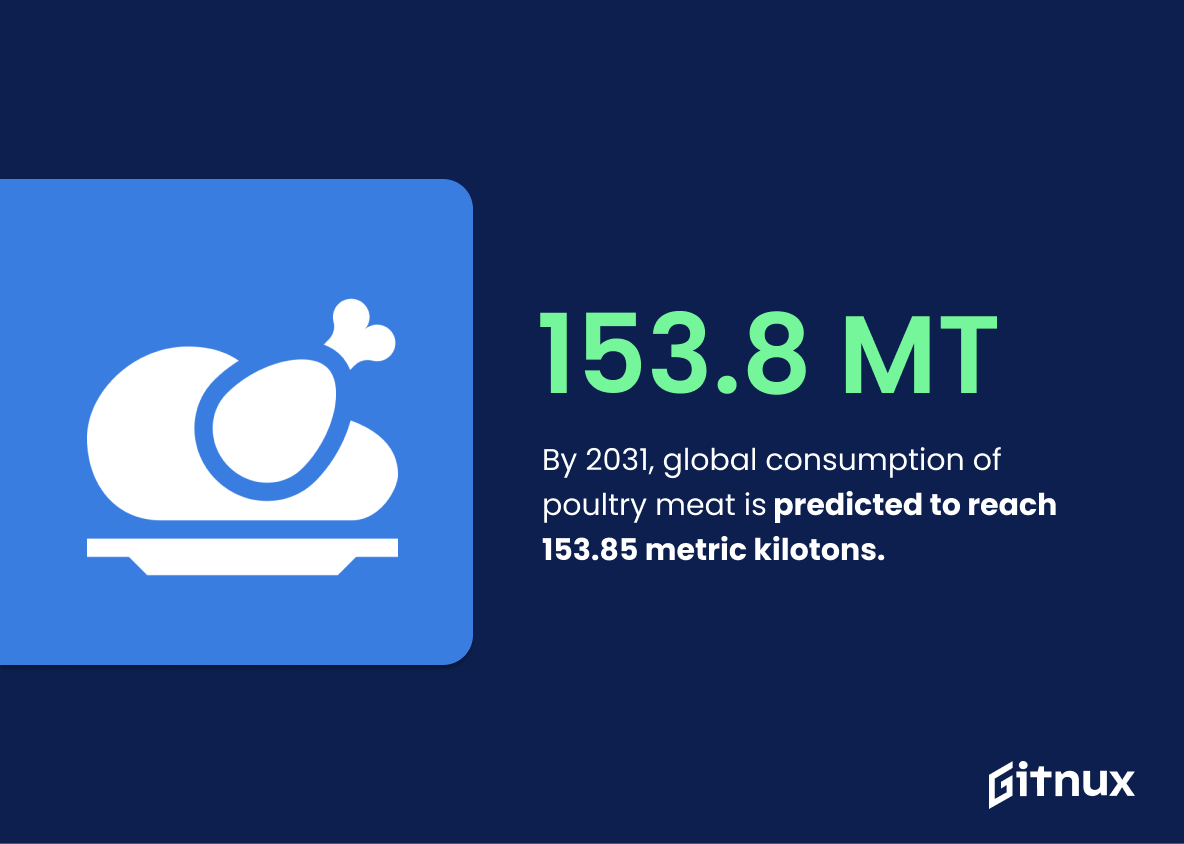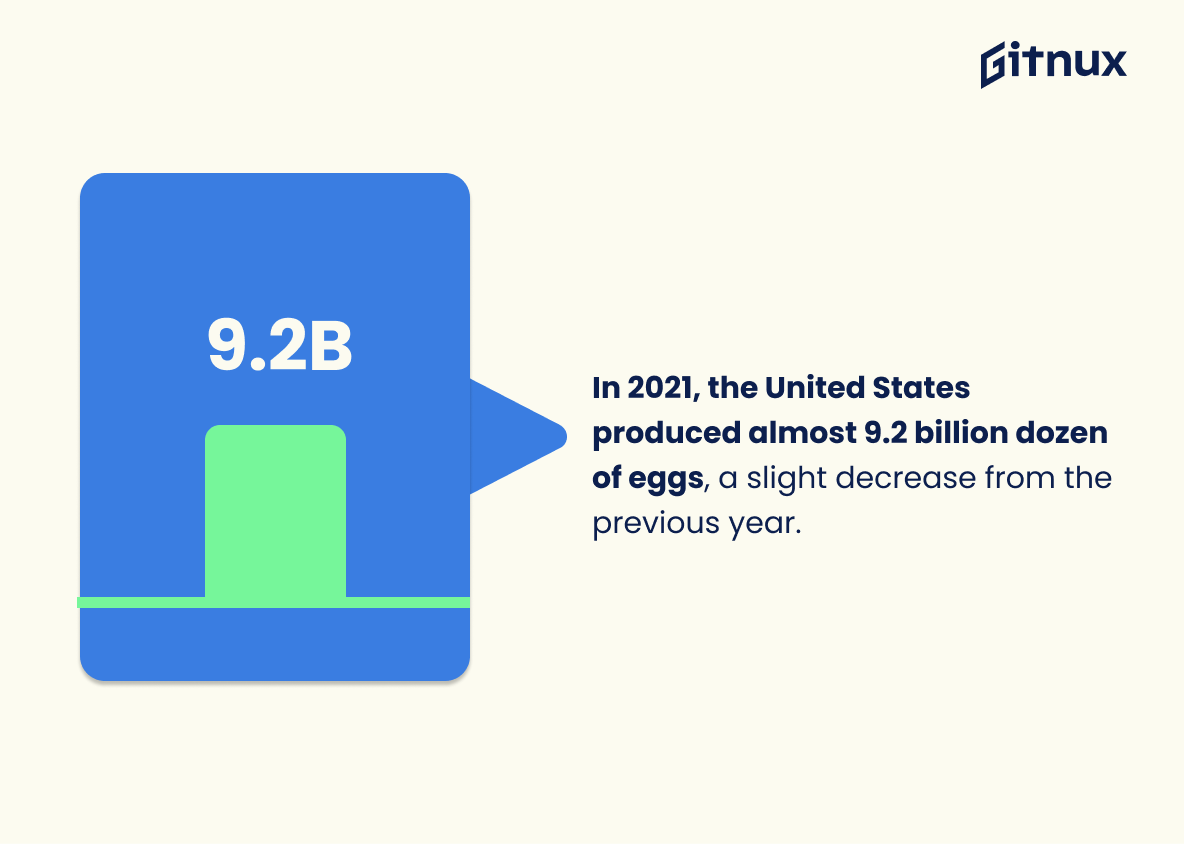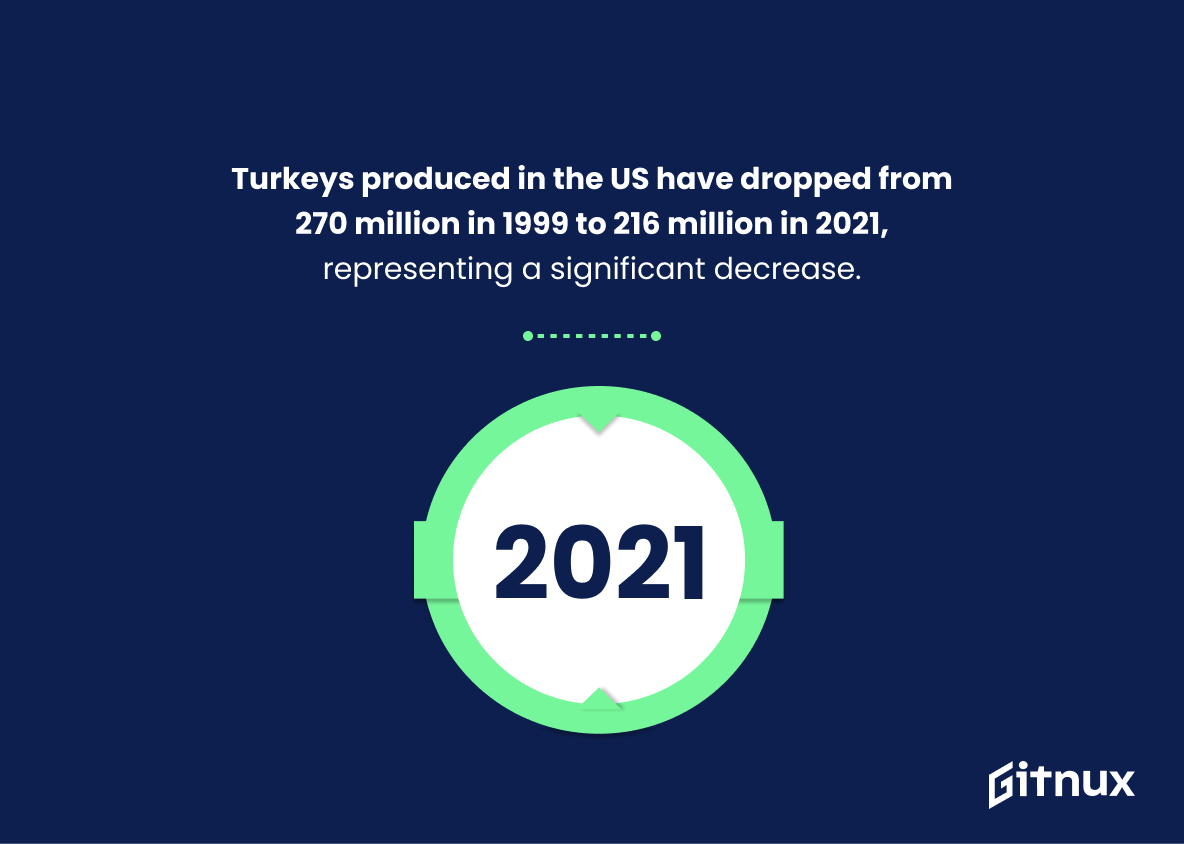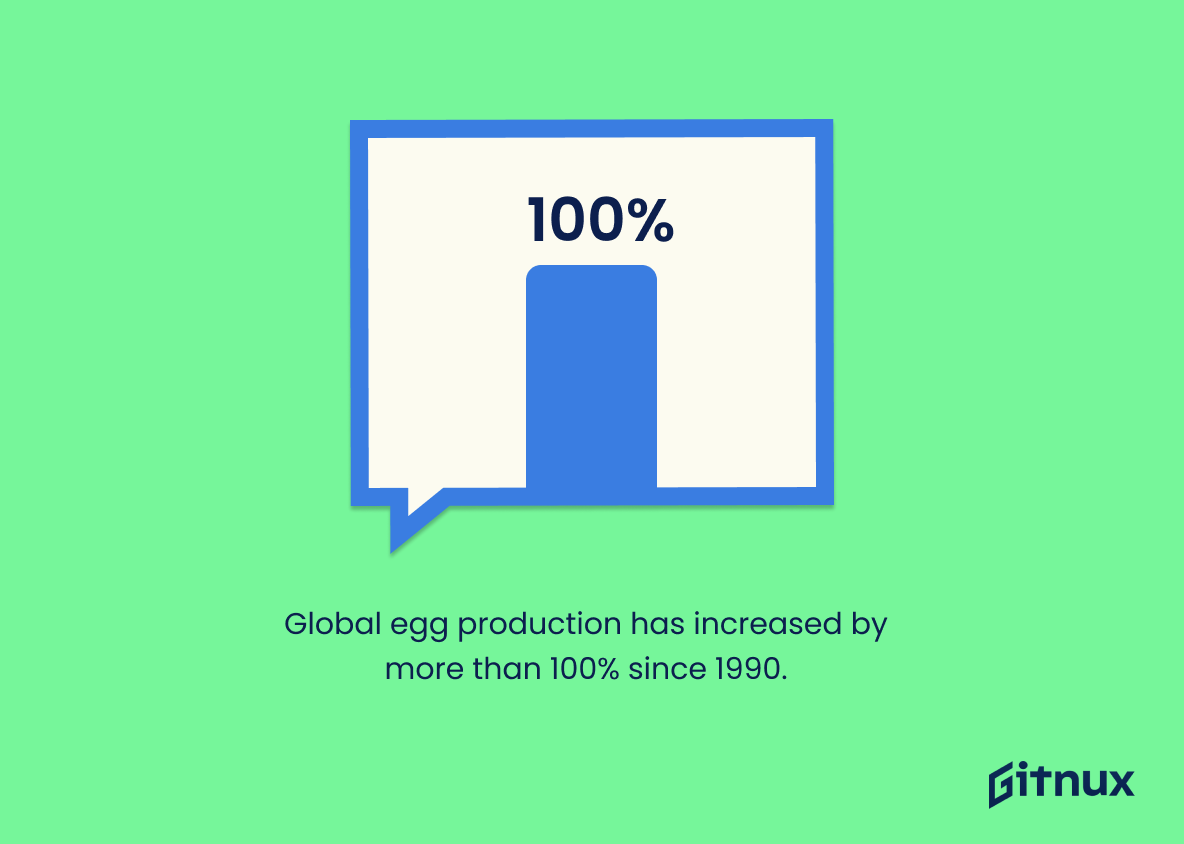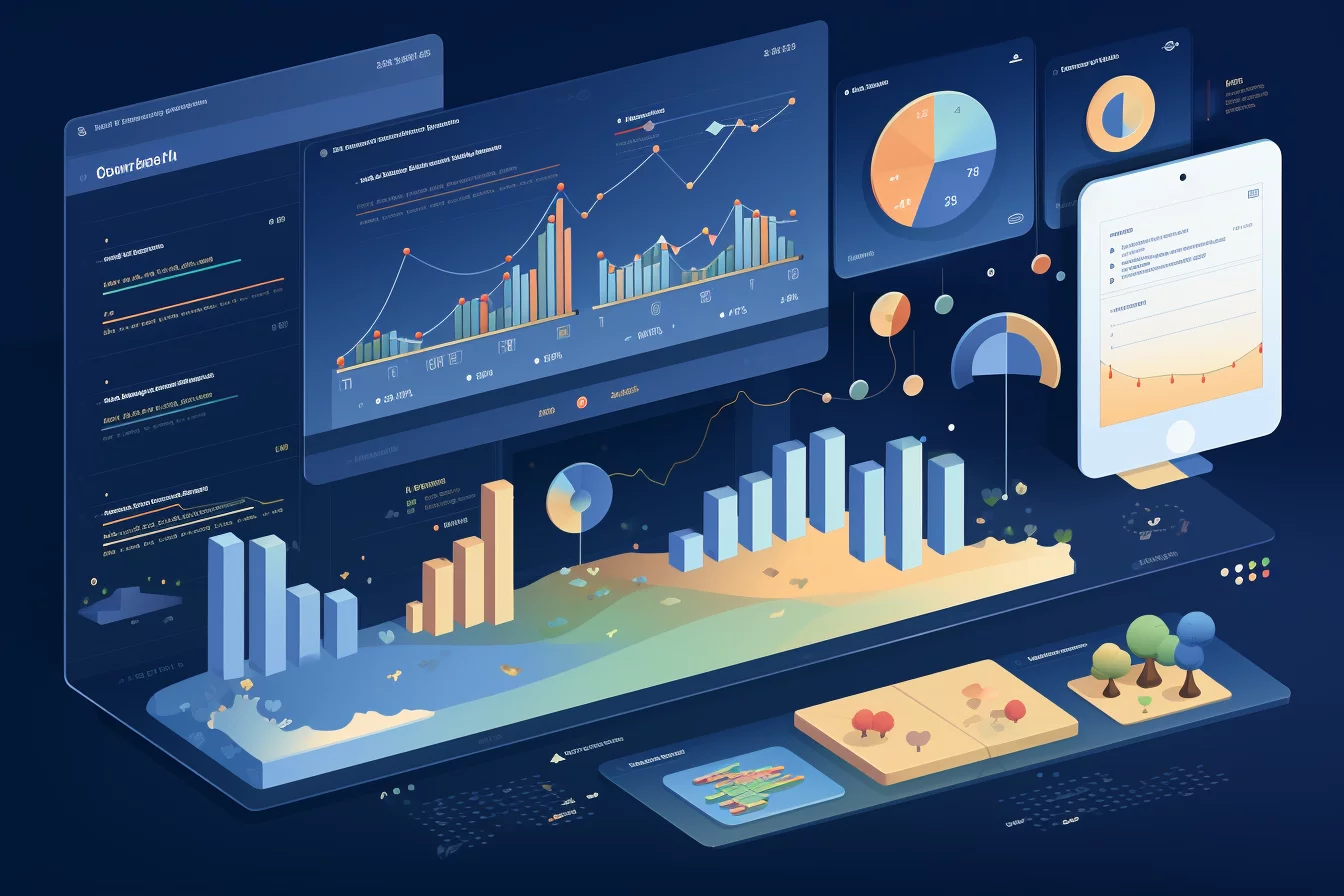The poultry industry is one of the most important agricultural industries in the world. It provides a vital source of protein for millions of people around the world and is a major contributor to the global economy. In this blog post, we will take a look at some of the most recent poultry industry statistics to get a better understanding of the current state of the industry.
We will look at the size of the industry, the production, and consumption of poultry, and the economic impact of the industry. We will also discuss some challenges facing the industry and the potential opportunities for growth. By the end of this post, you will have a better understanding of the poultry industry and the potential it has to contribute to the global economy.
Poultry Industry: The Most Important Statistics
Global egg production has increased by more than 100% since 1990, with 86.3 million metric tons of eggs produced in 2021.
Turkeys produced in the US have dropped from 270 million in 1999 to 216 million in 2021, representing a significant decrease.
Poultry Industry Statistics Overview
Germany’s production of meat and poultry products is expected to generate 31.11 billion US dollars in sales by 2016, which is important for the poultry industry as it provides a valuable source of revenue.
By 2025, the UK’s revenue from the production of meat and poultry meat products is expected to reach 6,669.21 million US dollars.
By 2031, global consumption of poultry meat is predicted to reach 153.85 metric kilotons.
In 2021, Americans consumed 96.5 pounds of broiler meat per person and this is expected to rise slightly to 96.9 pounds in 2022. The expected increase in consumption in 2022 suggests that demand for poultry products is likely to remain strong.
The output of chicken meat worldwide is expected to rise from 92.7 million metric tons in 2018 to 101 million metric tons in 2022.
Germany produced over 1 billion tons of broiler chicken meat in 2021. This statistic is important because it shows the growth in production of broiler chicken meat in Germany over the past 30 years.
Global egg production has increased by more than 100% since 1990, with 86.3 million metric tons of eggs produced in 2021.
Thus, the industry is growing and that demand for eggs is increasing. This growth is likely due to the increasing population and the growing demand for eggs as a source of protein.
In 2021, the United States produced almost 9.2 billion dozen of eggs, a slight decrease from the previous year.
The number of chickens in the United States has increased by 81.5 million from 2000 to 2020.
This shows that the industry is growing and that there is an increasing demand for poultry products. It also indicates that the industry is becoming more efficient in producing chickens, which is beneficial for the industry as a whole.
Turkeys produced in the US have dropped from 270 million in 1999 to 216 million in 2021, representing a significant decrease.
Conclusion
The poultry industry is an important part of the global food industry, providing a wide range of products for consumers. The industry is growing rapidly, with production increasing in both developed and developing countries.
The industry is also becoming increasingly efficient, with technological advances helping to reduce costs and increase productivity. With the continued growth of the industry, it is important to stay up to date with the latest poultry industry statistics. By doing so, companies can better understand the market and make informed decisions about their operations.
References
1 – https://www.statista.com/forecasts/391769/germany-meat-and-poultry-product-production-revenue-forecast-nace-c1013
2 – https://www.statista.com/forecasts/397203/production-of-meat-and-poultry-meat-products-revenue-in-the-united-kingdom
3 – https://www.statista.com/statistics/739951/poultry-meat-consumption-worldwide/
4 – https://www.statista.com/statistics/911750/per-capita-consumption-of-poultry-meat-in-the-us-by-type/
5 – https://www.statista.com/statistics/237637/production-of-poultry-meat-worldwide-since-1990/
6 – https://www.statista.com/statistics/544261/broiler-chicken-meat-production-volume-germany/
7 – https://www.statista.com/statistics/263972/egg-production-worldwide-since-1990/
8 – https://www.statista.com/statistics/196094/us-total-egg-production-since-2001/
9 – https://www.statista.com/statistics/196028/total-number-of-all-chickens-in-the-us-since-2000/
10 – https://www.statista.com/statistics/196092/total-number-of-turkeys-raised-in-the-us-since-1999/
